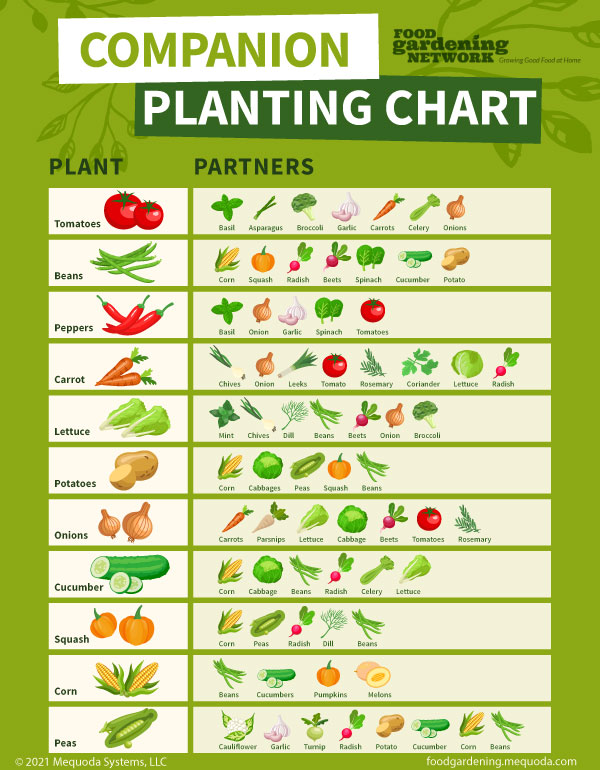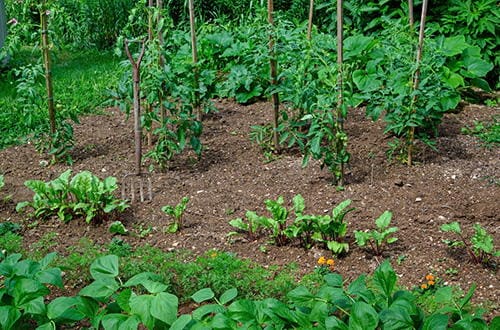The Ultimate Guide To Companion Planting: A Numberpoint Chart Of The Best Vegetable Companions
Introduction
Companion planting is the practice of planting different types of plants together for mutual benefit. This can be done to attract beneficial insects, repel pests, improve soil health, or simply to create a more attractive and productive garden.
There is a long history of companion planting, dating back to ancient times. In recent years, there has been renewed interest in this practice, as gardeners seek more natural and sustainable ways to grow their food.
The Benefits of Companion Planting
There are many benefits to companion planting. Some of the most common benefits include:
- Attracting beneficial insects: Many plants attract beneficial insects, such as ladybugs, lacewings, and spiders. These insects help to control pests, such as aphids, caterpillars, and beetles.
- Repelling pests: Some plants have strong scents or chemicals that repel pests. For example, marigolds repel nematodes, and garlic repels aphids.
- Improving soil health: Some plants help to improve soil health by fixing nitrogen, breaking down organic matter, or suppressing weeds.
- Creating a more attractive garden: Companion planting can be used to create a more attractive and diverse garden. By planting different types of plants together, you can create a more interesting and visually appealing space.
How to Choose Companion Plants
When choosing companion plants, there are a few things to keep in mind. First, you need to consider the needs of the plants you are growing. Some plants need full sun, while others prefer partial shade. Some plants need well-drained soil, while others are more tolerant of wet soil.
Once you know the needs of your plants, you can start to research companion plants. There are many resources available to help you find companion plants, including books, websites, and gardening magazines.
A numberPoint Chart of the Best Vegetable Companions
The following chart lists some of the best vegetable companions. This is just a small sampling of the many possible companion plant combinations.
| Vegetable | Companion Plants |
|---|---|
| Beans | Corn, peas, potatoes, tomatoes |
| Beets | Carrots, radishes, spinach |
| Cabbage | Dill, onions, radishes |
| Carrots | Beets, onions, tomatoes |
| Corn | Beans, peas, squash |
| Cucumbers | Beans, melons, peas |
| Eggplant | Beans, marigolds, peppers |
| Lettuce | Beans, carrots, onions |
| Melons | Cucumbers, corn, squash |
| Onions | Carrots, beans, tomatoes |
| Peas | Beans, carrots, lettuce |
| Peppers | Beans, marigolds, eggplant |
| Potatoes | Beans, corn, tomatoes |
| Spinach | Carrots, lettuce, beans |
| Tomatoes | Basil, beans, marigolds, peppers |
Conclusion
Companion planting is a great way to improve the health and productivity of your garden. By planting different types of plants together, you can attract beneficial insects, repel pests, improve soil health, and create a more attractive and diverse garden.
If you are new to companion planting, I encourage you to do some research and experiment with different combinations. You may be surprised at how well your plants grow when they are surrounded by their botanical friends.
Are you planning to start a vegetable garden? If so, you'll want to make sure you're planting compatible vegetables together. Some vegetables attract pests or diseases that can harm others, so it's important to know which ones to avoid planting near each other.
A great resource for finding out which vegetables are compatible is Garden Wiki. This website has a comprehensive chart that shows which vegetables can be planted together, as well as which ones should be avoided.
Image of compatible vegetable gardening chart
This chart shows which vegetables are compatible with each other, and which ones should be avoided planting near each other.
The 3-Sisters Garden is a traditional Native American planting method that combines corn, beans, and squash. These plants benefit each other by providing support, shade, and nitrogen.
Square Foot Gardening is a method of gardening that uses a grid system to space plants evenly. This method is ideal for small gardens and can be used to grow a variety of vegetables.
The Amish have a long tradition of vegetable gardening, and they have developed a number of companion planting techniques. This chart shows some of their most common recommendations.
Mel's Mix is a popular potting mix that is made from a blend of peat moss, perlite, and vermiculite. This mix is well-draining and provides good aeration for roots.
An insectary is a garden that is specifically designed to attract beneficial insects. These insects can help to control pests and improve pollination.
A cold frame is a small greenhouse that can be used to extend the growing season. Cold frames can be used to start seeds early in the spring or to protect tender plants from frost in the fall.
Vertical gardening is a way to grow plants in a vertical space. This can be a great option for small gardens or for people who want to save space.
Hydroponics is a method of growing plants without soil. Plants are instead grown in a nutrient-rich solution. Hydroponics can be a great way to grow plants in a controlled environment.
Aquaponics is a system that combines aquaculture (raising fish) with hydroponics. The fish waste provides nutrients for the plants, and the plants help to filter the water for the fish.







Post a Comment for "The Ultimate Guide To Companion Planting: A Numberpoint Chart Of The Best Vegetable Companions"